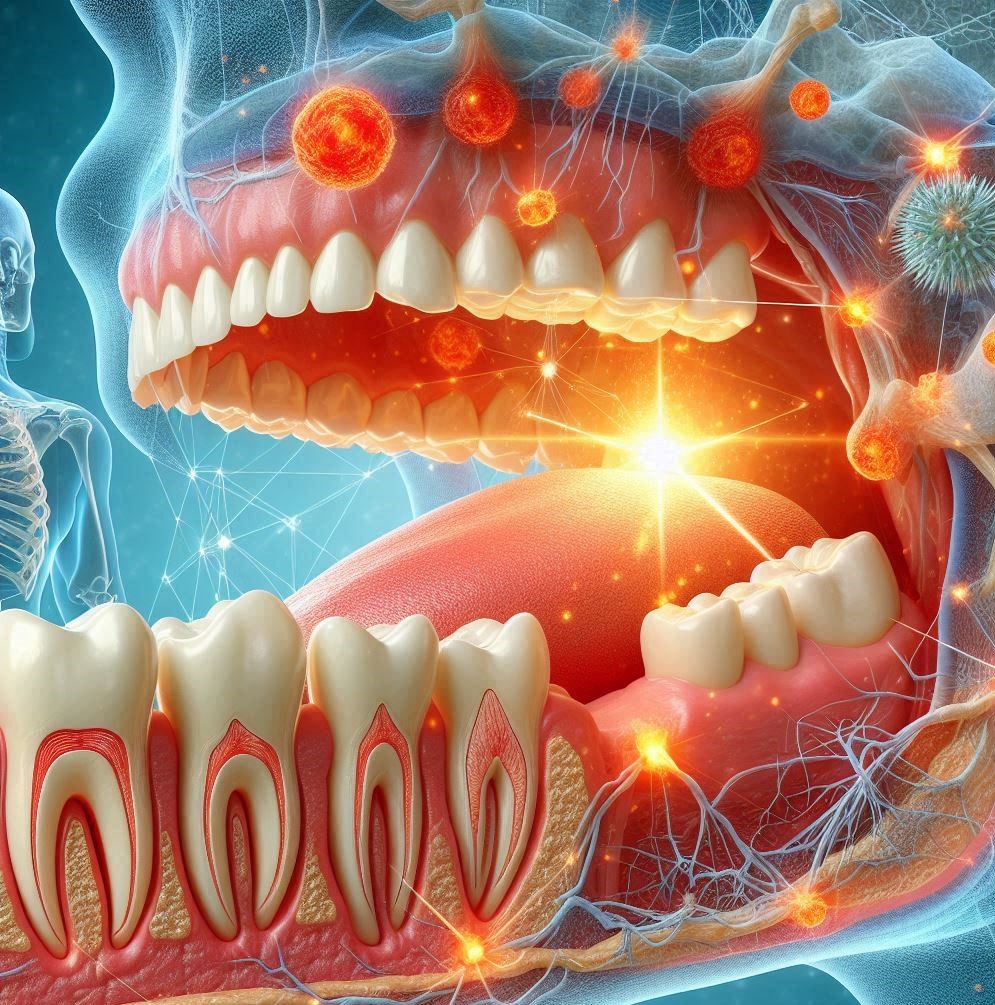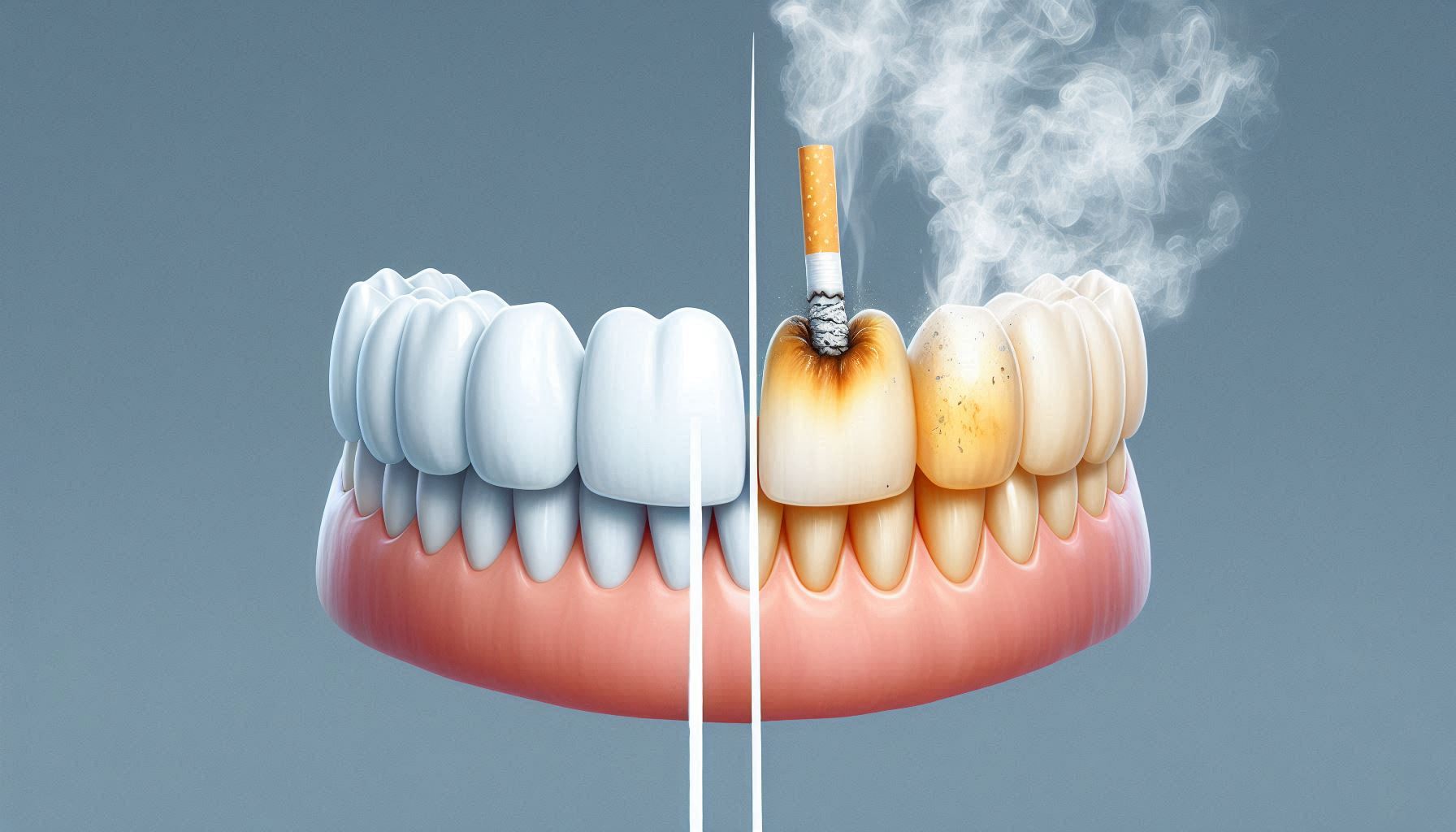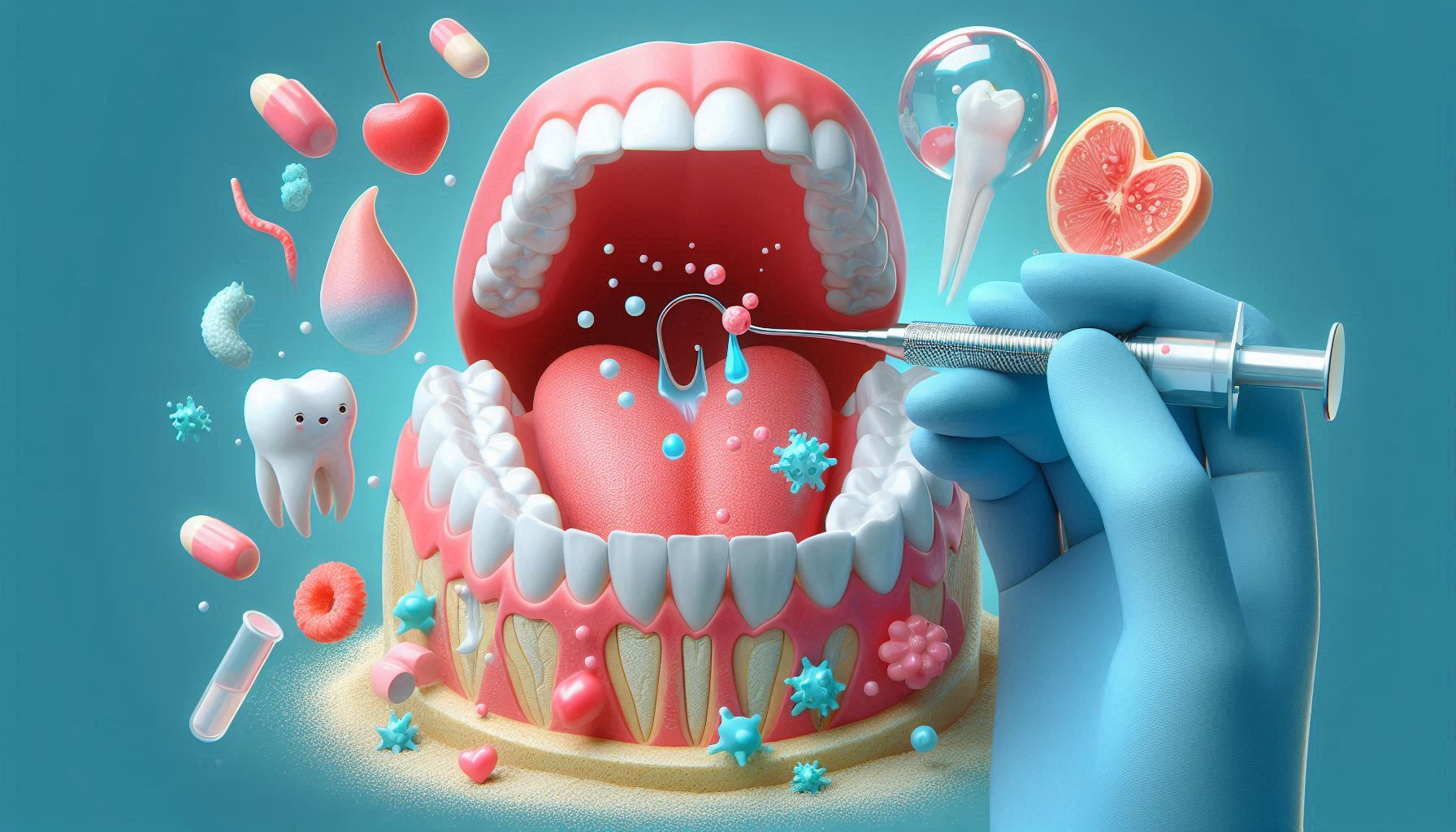Chronic inflammation in the mouth, particularly as a result of gum disease, is not just about irritated or bleeding gums. Over time, if left untreated, the inflammatory response can lead to significant alterations in the bone structure that supports teeth. The connection between inflammation and bone health is complex and not limited to bone resorption (the loss of bone tissue). Recent evidence points to the possibility of abnormal bone growth or ossification occurring in response to persistent inflammatory stimuli.
One of the primary culprits in chronic oral inflammation is periodontal disease, which affects millions of people worldwide. Periodontitis, the advanced stage of gum disease, is a progressive condition that results in the destruction of the connective tissues and bone around the teeth. As the infection and inflammation advance, the body’s immune response leads to the activation of osteoclasts—cells responsible for breaking down bone tissue. This process leads to the loss of bone mass in the jaw, a common consequence of untreated gum disease.
However, chronic inflammation in the oral cavity does not always result in bone resorption. In some cases, it may lead to abnormal bone formation. While bone growth in the mouth is typically restricted to areas where it is needed for support or repair, chronic inflammation can create an environment where abnormal bone growth occurs, potentially causing unintended osseous formations. These can take the form of bone spurs or abnormal growth in areas that compromise normal tooth function or even lead to complications in orthodontic treatment.
The process by which chronic inflammation leads to abnormal bone formation involves a series of molecular signals. Inflammatory mediators, such as cytokines and growth factors, play a pivotal role in the interaction between immune cells, osteoblasts, and osteoclasts. These factors can cause a shift in the balance between bone resorption and formation, leading to the development of new, but often improperly structured, bone tissue.
Causes of Chronic Inflammation in the Mouth
Gum disease, or periodontal disease, is the leading cause of chronic inflammation in the mouth. It begins with a microbial imbalance in the oral microbiome, primarily due to poor oral hygiene practices. Plaque, a sticky film of bacteria that forms on the teeth, is the initial culprit. Over time, if plaque is not removed through regular brushing and flossing, it hardens into tartar, which cannot be removed by regular brushing. The bacteria in plaque and tartar release toxins that irritate the gums, leading to inflammation. This inflammation, if persistent, can extend to the deeper tissues, causing the bone loss and potentially abnormal bone formation discussed later.
Other causes of chronic inflammation in the mouth include:
- Trauma (such as from ill-fitting dental appliances or braces)
- Smoking and tobacco use, which irritate the gums and contribute to inflammation
- Systemic conditions like diabetes and autoimmune diseases, which can affect the body’s ability to heal and control inflammation in the gums
- Infections (bacterial or viral) that might be recurrent or persistent in the oral cavity
- Poor nutrition, especially deficiencies in vitamin C and calcium, which impair the immune system’s ability to regulate inflammation and maintain bone health
Chronic inflammation in the mouth not only results in damage to soft tissues like the gums but also severely affects bone tissue, particularly the alveolar bone—the bone that supports the teeth.
The Biology of Bone Growth and Bone Remodeling in the Mouth
Understanding how bone growth and remodeling work in the mouth is essential to grasp the significance of inflammation’s role in these processes. Bone is a dynamic tissue that is constantly being broken down and rebuilt in a process known as bone remodeling. This process is essential for maintaining bone integrity and adapting to mechanical forces (like chewing).
Bone Resorption vs. Bone Formation
In the context of bone remodeling, there are two key processes that occur:
- Bone Resorption: The breakdown of bone tissue by osteoclasts, specialized cells that absorb bone material. Inflammatory signals, especially during chronic conditions like periodontal disease, activate osteoclasts in a way that can cause excessive bone resorption, leading to bone loss.
- Bone Formation: The creation of new bone by osteoblasts. Osteoblasts synthesize collagen and other extracellular matrix components, which form the bone matrix. In a healthy system, osteoblasts counterbalance the activity of osteoclasts to maintain bone homeostasis. Chronic inflammation, however, can impair osteoblast function, reducing the capacity for bone repair.
Bone remodeling in the oral cavity is driven by mechanical forces, such as chewing. For example, when a tooth is lost, the surrounding alveolar bone begins to resorb because it no longer experiences the pressure from the tooth’s root. Conversely, when a tooth is under pressure, such as during orthodontic treatment, bone formation is stimulated on the side of the tooth that is under compression. In periodontal disease, however, the chronic inflammatory response disrupts the balance between osteoclasts and osteoblasts, often resulting in pathological bone loss.
Bone Remodeling in the Periodontium
The periodontium refers to the tissues that support the teeth, including the gums, periodontal ligament, and alveolar bone. In a healthy periodontium, bone resorption and formation occur at a balanced rate, ensuring that the teeth remain anchored firmly in place. However, when the gums become inflamed due to periodontal disease, the inflammatory mediators released can stimulate osteoclasts and suppress osteoblasts, leading to bone resorption. As bone resorption continues, the alveolar bone supporting the teeth is progressively lost, and the teeth may become loose or even fall out.
Understanding Gum Disease (Periodontal Disease)
Periodontal disease is a progressive condition that affects the soft tissues and bone supporting the teeth. It typically begins with gingivitis, which is the earliest stage of gum disease, and can advance to periodontitis and eventually advanced periodontitis if left untreated.
Gingivitis
Gingivitis is the mildest form of gum disease, characterized by red, swollen, and bleeding gums, often triggered by a buildup of plaque at the gumline. At this stage, inflammation is confined to the soft tissues, and there is usually no bone loss. Gingivitis can be reversed with proper dental hygiene practices.
Periodontitis
As gingivitis progresses, it can develop into periodontitis. This more advanced stage of gum disease involves the deeper tissues of the gums and may lead to the formation of pockets between the teeth and gums. The inflammatory response extends deeper into the periodontium, resulting in the breakdown of connective tissues and loss of bone around the affected teeth. This can cause the teeth to become loose and may eventually result in tooth loss if left untreated.
Advanced Periodontitis
In the most severe stage of periodontitis, advanced periodontitis, the supporting bone around the teeth is severely damaged, and the teeth may be lost. The inflammatory mediators in the periodontium lead to increased osteoclast activity, causing the alveolar bone to resorb at an accelerated rate.
At each stage, the immune system mounts a response to the bacterial infection, and this leads to the activation of immune cells, which release inflammatory cytokines and other signaling molecules. These mediators play a central role in the destruction of soft tissues and bone. For instance, interleukins (IL-1, IL-6) and tumor necrosis factor-alpha (TNF-alpha) are inflammatory cytokines that are upregulated in response to infection and contribute to the activation of osteoclasts and the breakdown of bone tissue.
Impact of Chronic Inflammation on Bone Resorption
Chronic inflammation in the mouth, particularly due to periodontal disease, plays a significant role in bone resorption, a process in which bone tissue is broken down and removed from the body.
Osteoclast Activation
Osteoclasts are the primary cells responsible for bone resorption. Under normal conditions, osteoclasts are activated when the body requires the breakdown of old or damaged bone, such as in the case of bone remodeling. However, in chronic inflammation, osteoclasts are excessively activated by the inflammatory mediators, particularly RANKL (Receptor Activator of Nuclear Factor Kappa-B Ligand). RANKL binds to its receptor, RANK, on osteoclast precursor cells, stimulating them to mature into active osteoclasts.
In the case of periodontal disease, the prolonged presence of bacteria and the inflammatory cytokines they release (such as IL-1 and TNF-alpha) causes the continuous activation of RANKL, leading to excessive osteoclast activity. This process results in the degradation of the alveolar bone surrounding the teeth, a hallmark of periodontal disease.
The Role of Prostaglandins
Prostaglandins are another set of inflammatory mediators that play a significant role in bone resorption. They are produced by the enzyme cyclooxygenase-2 (COX-2) in response to inflammation and contribute to the activation of osteoclasts. Elevated levels of prostaglandins in the periodontal tissues can exacerbate bone resorption and promote the progression of periodontal disease.
Cytokines and Their Role in Bone Resorption
Cytokines are signaling molecules that regulate immune and inflammatory responses. In periodontal disease, IL-1 and TNF-alpha are upregulated and contribute significantly to the activation of osteoclasts. IL-1 is particularly important because it stimulates the production of prostaglandin E2 (PGE2), a potent mediator of bone resorption. Prolonged exposure to these inflammatory cytokines leads to continuous bone breakdown and loss of alveolar bone.
Abnormal Bone Growth in the Mouth: The Role of Chronic Inflammation
While much of the focus in periodontal disease is on bone loss, chronic inflammation can also contribute to abnormal bone growth. This process is much more complex and less well understood but is increasingly being studied for its potential impact on oral health.
Ectopic Bone Formation
Ectopic bone formation refers to the growth of bone in an area where it is not normally present. In response to chronic inflammation, bone may form in the periodontal tissues, or in the soft tissues surrounding the gums. This can occur in response to the activation of growth factors and cytokines that are typically involved in the bone healing process.
Abnormal Osseous Reactions
Abnormal bone growth, or osseous reactions, can occur as a response to inflammation in the periodontal tissues. This reaction may manifest as irregular bone formation along the tooth roots or within the soft tissues. This kind of bone growth is typically disorganized and can lead to structural issues, interfering with the function of teeth and gums.
Inflammatory Mediators in Bone Formation
Inflammatory cytokines such as BMPs (Bone Morphogenetic Proteins) and TGF-beta (Transforming Growth Factor-beta), which are typically involved in bone repair and growth, can contribute to abnormal bone formation during chronic inflammation. BMPs, in particular, are critical in regulating osteoblast differentiation and bone formation. However, their dysregulation in the context of chronic inflammation may lead to the formation of abnormal bone structures that are not functional or useful.
Clinical Manifestations of Abnormal Bone Growth
Abnormal bone growth in the mouth can present in several ways, including:
- Radiographic Findings: X-rays may show unusual patterns of bone growth, such as spurs or lumps of bone around the teeth.
- Pain and Discomfort: Abnormal bone growth can cause discomfort, especially when chewing or during dental procedures.
- Tooth Mobility: Excessive bone growth can interfere with the normal alignment of the teeth, causing them to shift or become loose.
- Cosmetic Concerns: In some cases, abnormal bone growth can be visible, causing irregularities in the gumline or tooth structure that may affect the patient’s appearance.
Prevention and Treatment of Inflammation-Induced Abnormal Bone Growth
Early intervention is key to preventing both bone resorption and abnormal bone growth. Preventive measures include:
- Regular Dental Hygiene: Brushing and flossing daily to prevent plaque buildup.
- Professional Cleanings: Regular visits to the dentist for cleanings to remove plaque and tartar.
- Smoking Cessation: Quitting smoking to reduce the risk of gum disease and bone loss.
Treatment for chronic inflammation and abnormal bone growth often involves:
- Antibiotic Therapy: To control bacterial infections.
- Scaling and Root Planing: A deep cleaning procedure that removes plaque and tartar from beneath the gumline.
- Surgical Procedures: In severe cases, surgery may be required to remove diseased tissue and correct abnormal bone growth.
Conclusion
Chronic inflammation in the mouth is a significant factor in the development of both bone resorption and abnormal bone growth. Understanding the underlying biological mechanisms of bone remodeling and inflammation is essential to effectively managing periodontal diseases. Through proper prevention, early detection, and treatment strategies, the adverse effects of chronic inflammation on oral bone health can be mitigated, preserving the integrity of the teeth and surrounding tissues.
As research continues to evolve, new therapeutic approaches and insights into osteoimmunology may offer more effective methods for managing chronic inflammation, bone resorption, and abnormal bone growth in the oral cavity. With timely interventions, patients can maintain healthier gums, stronger bones, and better overall oral health.
SOURCES
Anderson, J. M., 2020. Periodontal disease and bone resorption: The complex relationship between inflammation and oral health. Journal of Clinical Periodontology, 47(5), 564-575.
Brown, R. L., 2018. The impact of chronic inflammation on bone health in the oral cavity: An overview. International Journal of Dental Research, 32(4), 402-411.
Chang, C. H., 2019. Role of inflammatory cytokines in osteoclast activation during periodontal disease. Journal of Immunology and Oral Health, 28(3), 233-245.
Davis, T. R., 2021. Inflammatory mediators and their role in abnormal bone growth in the mouth. Journal of Osteoimmunology, 15(2), 98-109.
Edwards, D. C., 2022. Osteoimmunology: A comprehensive review of the immune system’s interaction with bone. Bone and Joint Journal, 58(6), 778-789.
Evans, S. E., 2020. The role of osteoblasts in bone formation during inflammation. Journal of Bone and Mineral Metabolism, 38(5), 755-763.
Fletcher, M. P., 2019. Bone loss and regeneration in the oral cavity: A systematic review of periodontal therapy outcomes. Journal of Clinical Dentistry, 44(7), 599-610.
Gonzalez, A. D., 2021. Interleukins and prostaglandins: Their contributions to abnormal bone formation in the oral cavity. Journal of Periodontal Research, 56(8), 1122-1133.
Harrison, G. L., 2018. The complex interaction between bacteria, the immune response, and bone remodeling in periodontal disease. Journal of Microbiology and Oral Health, 45(9), 65-74.
Jones, H. M., 2021. Regenerative techniques in the treatment of periodontal bone loss: A review. Journal of Oral and Maxillofacial Surgery, 29(3), 182-193.
Martin, J. A., 2020. Clinical evidence on the impact of smoking on periodontal bone health. Journal of Dental Research, 99(6), 616-627.
Morris, E. L., 2019. Abnormal bone growth in the mouth: An underexplored consequence of chronic inflammation. Journal of Oral and Craniofacial Surgery, 25(4), 354-368.
Nelson, R. S., 2022. The effects of systemic diseases on periodontal health and bone integrity. Journal of Periodontics and Restorative Dentistry, 51(7), 722-735.
Reid, P. F., 2018. The role of immune cell activation in periodontal disease-induced bone loss. Immunology and Dentistry Journal, 36(1), 14-25.
Simmons, W. L., 2020. Understanding bone resorption in periodontal disease: Insights from recent studies. Journal of Clinical Oral Implants, 40(6), 501-512.
Takahashi, K. K., 2021. The regulation of osteoclastogenesis by inflammatory cytokines in periodontal disease. Journal of Oral Immunology, 33(8), 285-297.
Thomas, R. T., 2022. Treatment strategies for abnormal bone growth in the oral cavity due to chronic inflammation. Dental Therapy Journal, 38(7), 440-451.
Williams, B. L., 2020. Emerging therapeutic approaches to managing chronic inflammation in periodontal diseases. Journal of Periodontal Therapy and Regeneration, 18(2), 102-114.
HISTORY
Current Version
March 15, 2025
Written By:
SUMMIYAH MAHMOOD




